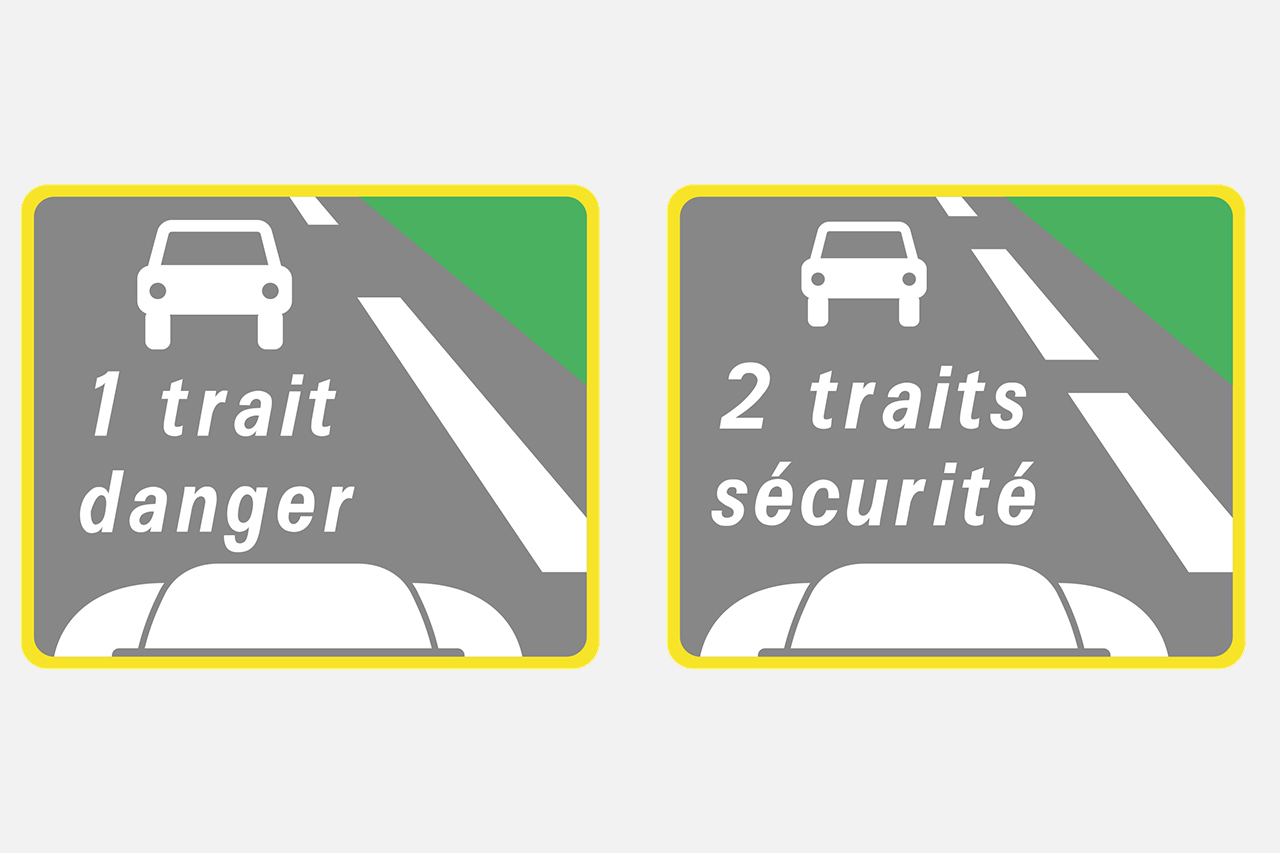
Faced with the persistent ignorance of motorists about “safety corridors”, a series of explanatory panels will be tested for three years on the motorway network. The challenge: put an end to the risk of collision that threatens vehicles parked on the hard shoulder.
It has already been almost four years since the “safety corridor” entered the highway code. And yet this measure which obliges a driver to leave the right-hand lane when a vehicle is parked on the hard shoulder of a motorway or an expressway is very little respected, because largely ignored.


However, the regulations are precise. According to article R. 412-11-1 of September 19, 2018, “ When a vehicle equipped with special lights [un véhicule de secours ou un patrouilleur] or any other vehicle whose driver is using his hazard warning lights (…) is immobilized or traveling at low speed on a shoulder or an emergency lane, any driver traveling on the right edge of the roadway must approach reduce his speed (…) and change lanes after making sure that he can do so without danger. »
In the event that changing lanes is not feasible because the left lane is occupied, “ the driver must move as far away from the vehicle as possible while staying in his lane. » Same behavior to adopt when a vehicle is immobilized or traveling at low speed on a roadway or on an adjacent traffic lane. Otherwise,
“The fact, for any driver, of contravening the provisions of this article is punishable by the fine provided for contraventions of the fourth class. (€135, reduced to €90).“
An accident every three days!

Given the difficulty of sanctioning, motorway companies have so far preferred to increase awareness campaigns on the subject, their intervention personnel being particularly concerned by this risk. In 2020, of the 131 accidents they suffered, one in four took place on the hard shoulder. The latest dates back no later than April 5 when an A9 patrol was fatally hit by a truck.
Poster campaigns not having the expected impact, Vinci Autoroutes is now moving up a gear by launching, under the supervision of the authorities, a vast awareness-raising operation using educational panels set up on various sites in its network. These are inspired by those who encouraged people to control their safety distance themselves a few years ago. Remember the famous “one trait: danger; two traits: safety”.

Two series of three panels placed on seven sites
The new experimental device is installed on seven high-traffic sections of the vast Vinci network using two series of three large panels (3.5 x 3m). On a variant there is an emergency vehicle stopped on the hard shoulder; on the other a heavyweight.

The three panels, spaced every 300 meters, each indicate a different message: the first informs the user of the right lane that he must slow down; the second that he must put on his indicator and change lanes (if possible); the third is the security corridor rule.
These series of panels can be found on the motorway network of the South of France (ASF) on:
- the A7 in the Bouches-du-Rhône after interchange n°26 Sénas (south/north direction, PR 218, 2×3 lane section),
- the A7, south of Lyon after the Vienne toll gate (north/south direction, PR 9, 2×3 lane section)
- the A10, in Gironde, after the Virsac toll gate (south/north direction, PR 523, 2×2 lane section)
- the A62 before the Saint-Selve toll (north/south direction, PR 12, 2×2 lane section);
- the A63, in the Landes, after the Ondres interchange no. 7 (north/south direction, PR 169 (2×3 lane section).
On the Cofiroute network :
- at the start of the A11 in the Yvelines after the Ablis interchange 1 (north/south direction, PR 38, 2×3 lane section).
On the Escota network :
- on the A8 in the Bouches-du-Rhône, after the A8/A52 interchange (west/east direction, PR 34, 2×3 lane section).
Three studies to measure its impact
This experiment is the subject of an extensive parallel evaluation through three different studies that will be carried out over the next three years.
- An impact study through the Barometer of the Vinci Autoroute Corporate Foundation, the periodicity of which will make it possible to assess the evolution of knowledge of the safety corridor rule.
- A study of the evolution of user behavior carried out by Cerema (a public establishment under the supervision of the Ministry of Ecological Transition) thanks to field observations. They will be carried out from an intervention simulation with an emergency vehicle stopped on the hard shoulder with its special lights on, as well as from a simulation of an unmarked vehicle stopped with its distress lit. ” The objective is to assess the rate of drivers applying the rules of the safety corridor and to estimate the impact of experimental traffic signs on user behavior », Specifies a decree published in the Official Journal on April 5. ” It is planned to carry out these evaluations close to the tested panels as well as at a distance of several kilometres. (…) The evaluation indicators will relate to the qualification of the trajectories of the users, in particular those circulating on the right lane and on the speeds practiced to the right of the stopped vehicle. »
- At last a comprehension survey. A panel of users will be interviewed either directly at motorway rest areas located downstream of sites equipped with the new signs, or by online questionnaire to subscribers.
The follow-up to this experiment will give rise to the establishment of a final evaluation report at the beginning of 2025. If the results are positive and have effectively enabled a majority of drivers to respect the safety corridors, we can then expect a generalization of these awareness panels throughout the territory.













